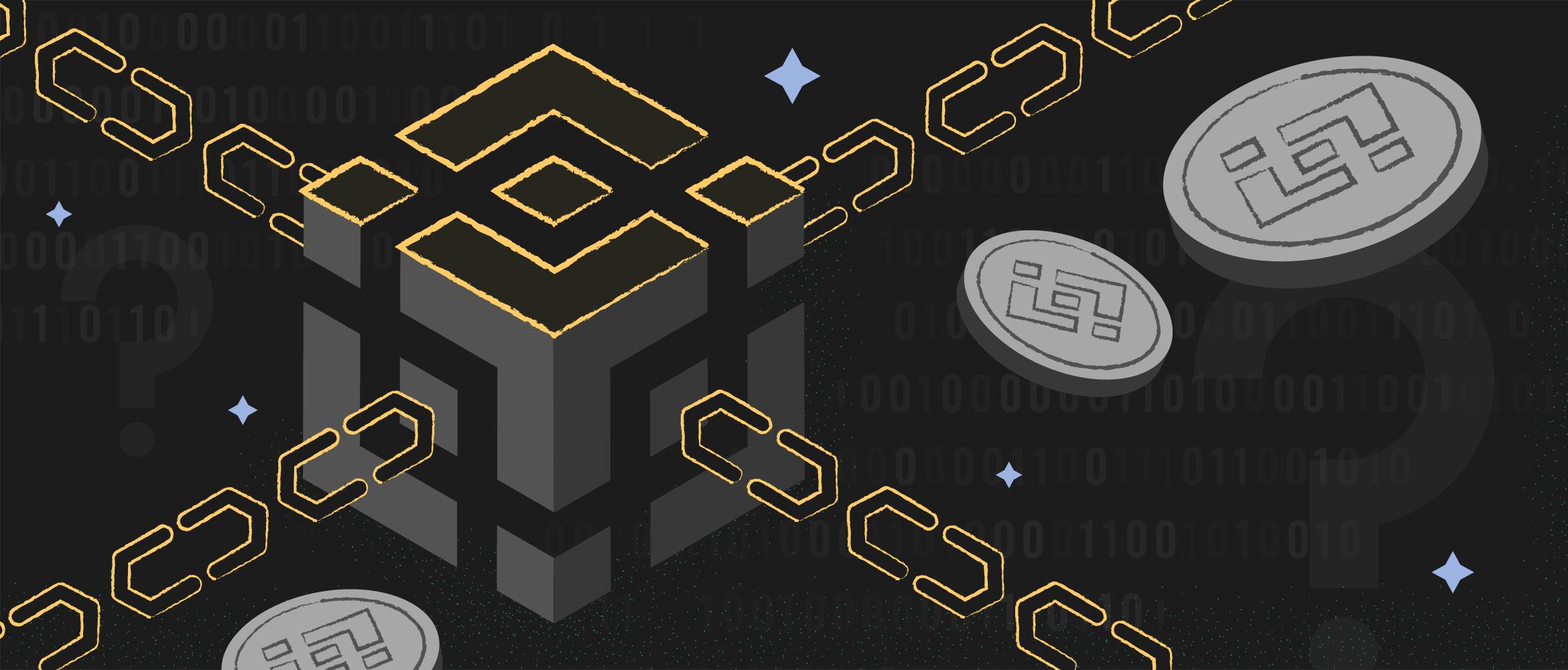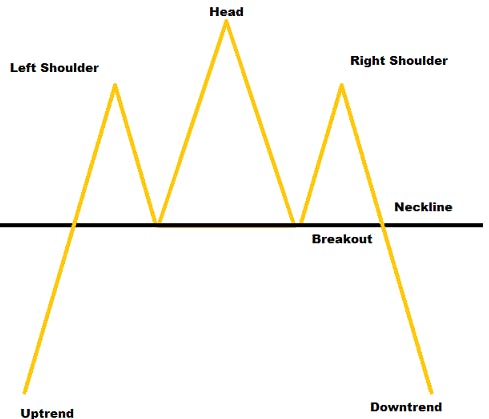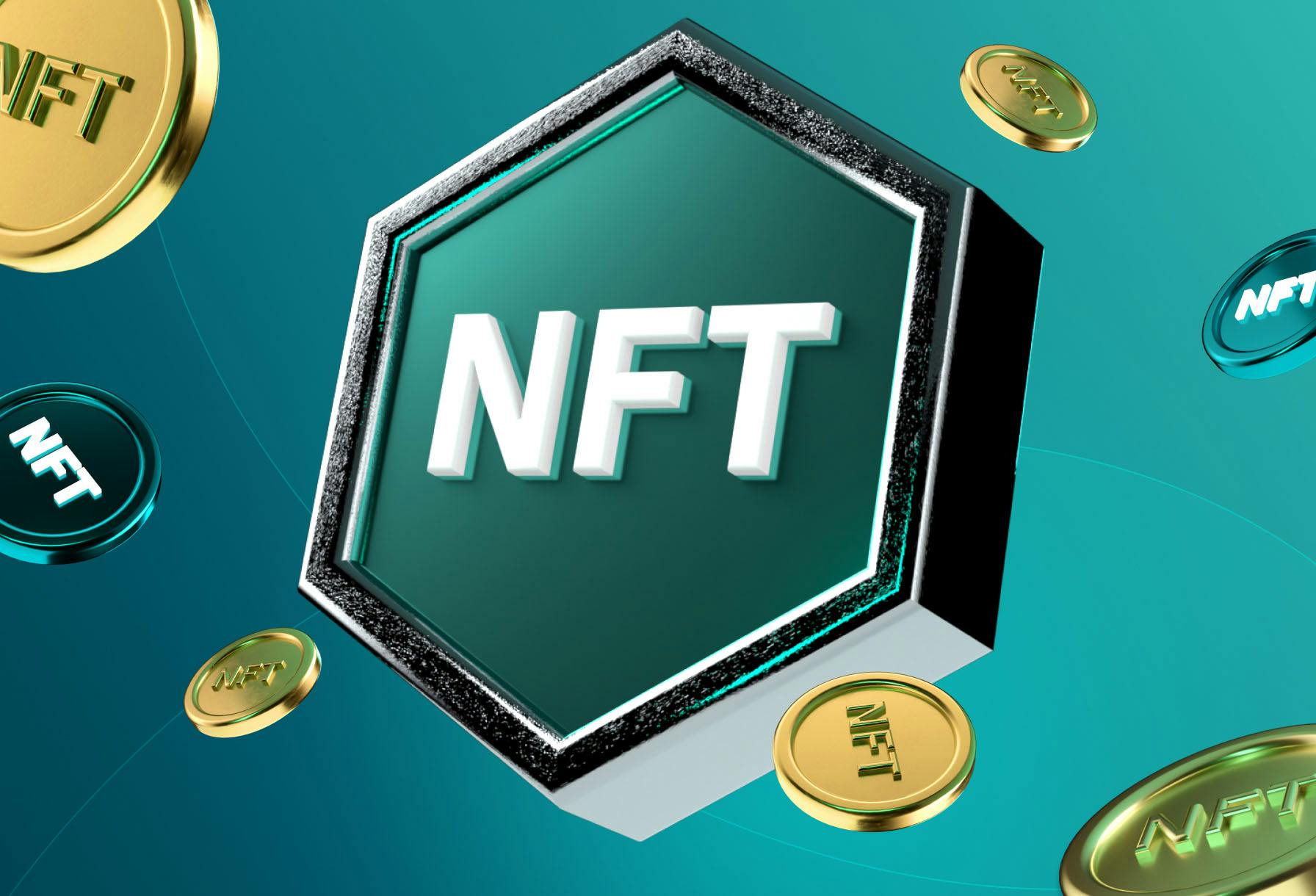
- All
- Tools
- Analytics
- Technical Analysis
- Trading
- Blockchain
- DeFi
- Guides
- Company News
- Educational
- Opinion
- Price Predictions
- Market News
- News
- Trading cases
- Practical guides
- Exchanges
- Trading signals
- Cryptocurrency
- Crypto bots
- Other
Become a crypto master
Learn everything about crypto,
trading and bots

Introducing NEAR Protocol: A Promising Opportunity in the Blockchain Space
This article provides an in-depth overview of NEAR Protocol, a blockchain protocol that offers scalability, smart contract functionality, and a user-friendly interface. It covers NEAR Protocol projects, use cases, NEAR Protocol tokenomics, challenges, and growth opportunities.
Start Trading on 3Commas Today
Get full access to all 3Commas trading tools with free trial period

Blockchain technology has rapidly gained popularity and revolutionized data management and financial transactions in various industries. One of the most promising blockchain platforms is NEAR Protocol.
NEAR Protocol is a blockchain platform designed to enhance the scalability, ease of use, and security of decentralized applications (dApps) and blockchain-based services. It employs a unique consensus mechanism called "Nightshade" to achieve this goal.
This article comprehensively explores all you need to know about NEAR Protocol, including NEAR Protocol projects and the NEAR Protocol tokenomics amongst others.
What is NEAR Protocol?
The NEAR Foundation introduced the decentralized blockchain technology known as the NEAR Protocol in 2018. It is intended to offer a quick, scalable, and developer-friendly architecture for the development of decentralized applications (dApps).
Unlike most blockchain platforms, the NEAR Protocol uses a special consensus method called Proof of Stake (PoS), which allows faster and more energy-efficient transaction processing. Rust, a high-performance and memory-safe programming language, is used to create the platform.
NEAR Protocol is different from other blockchain platforms because it makes it easy for developers to create and deploy dApps. The platform offers a wide range of tools and services, such as the AssemblyScript smart contract language, the Near Storage decentralized storage system, and the Near Studio web-based integrated development environment.
NEAR Protocol’s Unique Features
Sharding
Sharding is a technique that the NEAR Protocol uses to execute transactions rapidly and effectively. It allows the NEAR Protocol to handle thousands of transactions per second without using the conventional block structure.
Payment Solution
NEAR Protocol offers low payment thresholds and several ways to use smart contracts to improve the payment experience. Some of these ways include settlements, online payments, invoices, and other payment methods.
Censorship-Resistant
NEAR Protocol is hard to censor because there are no central servers, user data is more secure, and every transaction is verified with blockchain technology.
Fast Transaction Offered By a Private Chain
Near Protocol uses DHT (a distributed hash table) for creating a private chain for users and to also provide fast transaction speeds. Unlike public chains like Ethereum, the NEAR Protocol processes transactions for users that are in each smart contract.
Distributed File Storage
A distributed file system allows users to share files without relying on central servers or other centralized entities. Each computer linked to the network saves some data in this kind of system so that all other computers can access it whenever they need it.
Anti-Fraud Platform
Smart contract technology and identity technology are the basis of NEAR Protocol's anti-fraud strategies. The NEAR Protocol API is a seamless system that secures payments and prevents fraud. It also allows users to create decentralized applications.
Advanced APIs
NEAR Protocol offers a set of APIs that cover most of the communication interface to help third-party dApp developers and make NEAR Protocol the foundation for next-generation dApp development.
Low Cost
NEAR Protocol allows freelancers and clients to get more value for their money by getting rid of unnecessary costs. Also, the NEAR Protocol uses blockchain technology to solve the issue of bandwidth sharing between customers and telecom providers. The protocol also provides a solution that enables a better payment transaction experience.
Use Cases of NEAR Protocol
In this section, we will consider the use cases of the NEAR Protocol and how it impacts different business sectors.
Gaming
A high-throughput blockchain network powered by the NEAR Protocol can sustain several transactions per second. This makes it perfect for gaming systems that need quick and inexpensive transactions. Under the NEAR Protocol, programmers can create blockchain-based games that allow users to earn rewards in cryptocurrencies.
Decentralized Finance (DeFi)
NEAR Protocol is a popular platform for creating DeFi applications. DeFi applications need a high level of security and transparency and this is what NEAR Protocol offers with the help of its powerful blockchain network.
Programmers can use NEAR Protocol to create decentralized exchanges, lending platforms, and other DeFi apps that allow consumers to access financial services without the help of middlemen.
Supply Chain Management
NEAR Protocol makes it safe and easy to track products from the person who made them to the person that bought them. The platform offers real-time tracking of commodities, which reduces fraud and increases the effectiveness of the supply chain.
Digital Identity
Secure, decentralized, and user-friendly digital identity systems can be developed using the NEAR Protocol. The platform's high level of security and privacy is essential for identity management systems. Programmers can use the NEAR Protocol to create digital identity applications that give users secure, decentralized access to their personal data and identity verification.
Social Media
Decentralized social media platforms that give consumers more control over their data can be created using the NEAR Protocol. Users can own their data and decide who gets access to it through social media sites built on the NEAR Protocol. This offers a level of protection and privacy not seen on conventional social networking platforms.
NEAR Architecture
The NEAR Protocol’s architecture aims to solve the "blockchain trilemma." This term shows how hard it is for blockchains to be safe, scalable, and decentralized at the same time. There is almost always one weak aspect.
NEAR uses an architecture known as Nightshade, a unique "sharding" technique, to build a horizontal scaling feature that addresses the trilemma.
Sharding
Sharding reduces the computational strain on nodes by dividing the network into smaller, more manageable pieces, or shards. This indicates that only the code necessary for each shard must be executed by each node, rather than the whole network code. This boosts the network's capability for scaling and permits a higher flow of transactions.
Nightshade
Nightshade enables the presentation of shards as a unified chain of data while distributing the computational workload required to sustain the data into manageable "chunks". This approach facilitates the efficient management and maintenance of data.
Validator nodes handle the chunks, processing them and adding the data to the chain. Since the participating nodes are in charge of smaller chains of nodes, this architecture offers more security because there are fewer potential points of failure.
Thanks to the sharding method, the NEAR Protocol can do about 100,000 transactions per second with very low transaction fees.
Rainbow Bridge
The NEAR Protocol allows network users to move ERC-20 tokens between Ethereum and NEAR with ease using a two-way bridge program called Rainbow Bridge. It operates by producing replicas of the original Ethereum tokens on the NEAR platform and locking deposited Ethereum tokens in a smart contract. It’s important to note that the process can be reversed.
Aurora
This is a Layer 2 scaling solution that combines the scalability of NEAR and Ethereum’s developer tooling. It supports the execution of Ethereum dApps on NEAR and is built on the NEAR Protocol. Developers can run Ethereum smart contracts on the Aurora blockchain and take advantage of the low fees since Aurora is EVM-compatible.
Consensus Mechanism
NEAR uses the Proof of stake (PoS) consensus mechanism. Nodes that want to verify transactions and create blocks must stake NEAR tokens to be eligible for participation. The higher the stake, the greater the impact they have on consensus.
Those who own tokens but don't want to validate can give their stake to another validator node. Then, once every epoch, or about every 12 hours, NEAR uses an auction method to choose validators.
NEAR Protocol Projects
Here are some of the top NEAR Protocol projects:
Mintbase
The first dApp based on the NEAR Protocol is Mintbase, which uses the NEAR Protocol to offer a wallet, private key management system, and payment service.
The features of Mintbase include:
Bitcoin/ETH Wallet
Users can use the wallet to keep their BTC and ETH. They can also use the wallet to send, receive, and make payments.
Payment Gateway
Customers can pay for things they buy in stores by scanning QR codes with the NEAR Protocol app on their phones.
NEAR Token Management Platform
NEAR Protocol allows users to use their wallets to buy or sell GAS or NEO tokens without incurring any transaction fees.
Off-Chain Private Key
Mintbase's private key is not kept on a blockchain. Instead, it is kept off-chain. This speeds up transaction processing, saves data, and lowers security threats.
dApp Express
dApp Express makes it easy for developers of NEAR Protocol-based dApps to quickly and easily connect to telecom infrastructure.
Its features include:
NEAR Token Wallet
Users may easily manage their tokens by accessing their wallets on their PCs or mobile devices.
NEAR Token Payment Service
dApp Express will allow customers to pay for dApps and telecom services using their NEAR Protocol tokens.
NPunks
NPunks is a decentralized game where players can contribute to the ecosystem and earn tokens by mining. It is the first dApp that the NEAR Protocol developed. Users can use their mobile devices to mine and receive rewards after a specific period.
Its features include the following:
Mining System
NPunks has designed the Proof of Work mining system to allow users to mine using their mobile phones.
NPunks Token
People who have mined some NEAR tokens will be able to use the Near Protocol mobile app to manage, move, or trade their tickets.
Cross-Connecting With Other dApps
Users can transfer their tokens to other dApps to pay for services like telecom services, in-app purchases on NPunks, and lots more.
Paras
Paras is an AI-based chatbot platform that offers a unique way for users to get answers to their questions about telecom services. Users may communicate with the AI chatbot and get prompt assistance with problems like customer service, billing, and technical support by using NEAR Protocol tokens.
Its features include:
Easy Question-and-Answer Platform
Users can send questions via text, voice, or video, and Paras will react in a humanized way.
Intelligent Analysis
Paras can give precise answers based on what a user asks for and what they talk about with other users.
Knowledge Base Sharing
Paras can share its knowledge with other phones that have loaded the same application by transferring information like customer feedback, customer service issues, etc.
NEAR Protocol Token (NEAR)
The native cryptocurrency token for the Near Protocol is called NEAR. The NEAR Protocol ecosystem relies on NEAR, which is used for several purposes such as payment of transaction fees, governance, and staking.
The main function of NEAR is to facilitate transactions on the NEAR Protocol blockchain. A modest amount of NEAR is needed as a transaction fee for each user-initiated transaction on the Near Protocol network. Validators who ensure network security and process transactions receive this fee as an incentive for their services.
Also, NEAR tokens can be used for staking; this involves locking up tokens to participate in governance and support the network. Stakers receive extra NEAR tokens in exchange for their network-building efforts.
NEAR is used for more than just transaction fees and staking on the Near Protocol network. It is also used for governance. NEAR token holders can vote on protocol upgrades and adjustments to the network's features.
Tokenomics
On April 22, 2020, NEAR launched its mainnet, with 1 billion NEAR tokens created at the beginning. Each year, 5% more supply is released to sustain the network's epoch rewards. The image below shows how the tokens are distributed:
Challenges and Opportunities for Near Protocol
NEAR Protocol has made significant strides in the blockchain industry, but like any new technology, it faces a few challenges. Despite these obstacles, NEAR Protocol has unique qualities that distinguish it from its competitors.
One of the primary challenges for NEAR Protocol is competition from other blockchain protocols. Ethereum remains a prominent participant in the DeFi field and has been an industry leader in smart contracts and dApps. Also, Binance Smart Chain and Solana, which offer comparable capabilities to NEAR Protocol, are emerging as formidable competitors.
Another challenge for NEAR Protocol is regulatory compliance. Regulators are increasingly aware of blockchain technology's development and are creating frameworks to control its usage. To prevent legal issues, NEAR Protocol must ensure that its platform and ecosystem comply with all applicable laws and regulations.
However, NEAR Protocol has numerous opportunities for improvement, including partnerships and collaborations with other businesses and blockchain projects like Chainlink and Algorand. Such partnerships could improve NEAR Protocol's features and expand its reach.
Furthermore, NEAR Protocol has plenty of room to grow in terms of use cases. While it has already achieved success in DeFi with projects like Paraswap and Ref Finance, other potential applications include supply chain management, virtual reality games, and social media and content creation.
Conclusion
NEAR Protocol is a cutting-edge blockchain platform with a lot of special features and benefits for its users. It is a good alternative for companies and developers who want to make decentralized apps because it has fast transaction times, low transaction fees, and easy-to-use programming tools.
The focus of NEAR Protocol on interoperability and scalability has the potential to change the blockchain industry by making it easy to connect to other blockchain networks and support a large number of users and applications.
Although NEAR Protocol has many advantages, it still has to deal with barriers to adoption and competition from other blockchain systems. Still, NEAR Protocol is in a good position to keep growing and evolving over the next few years, thanks to its strong development team, active community, and partnerships with top businesses and institutions.
The unique features and advantages of the NEAR Protocol will undoubtedly be important in determining the future of DeFi, social networks, gaming, and other industries as blockchain technology continues to gain momentum and wide acceptance.
NEAR Protocol Ecosystem FAQ
NEAR Protocol is a platform for decentralized applications (dApps) and a competitor to Ethereum. It places a strong emphasis on ease of use for both developers and users. The platform's native NEAR tokens serve as a means of paying for transaction fees and storage on the Near crypto platform.
With the growing acceptance of cryptocurrencies over the coming years, the NEAR Protocol has incredible potential. Recently, NEAR Protocol has demonstrated very great potential, so you may consider investing in the project.
The NEAR Protocol incentivizes a blockchain network to build and launch decentralized applications on the DeFi platform and make a profit by using strategies like staking and sharding.
By incorporating the Nightshade and Doomslug technologies, NEAR Coin can significantly enhance its performance, thereby increasing its value to developers and end-users alike.
Also, Ethereum faces scalability issues, which NEAR has successfully addressed through its innovative solutions. As a result, NEAR Coin holds a competitive advantage over Ethereum.
NEAR is a public blockchain that uses sharding, Proof of Stake, and developer-friendly features. It aims to offer a decentralized application and smart contract experience that rivals Ethereum. Also, NEAR has lower fees and greater throughput, making it a strong contender in the blockchain space.

Adedamola is a highly resourceful content writer with comprehensive experience in researching and creating simple content that engage and educate the audience. He is interested in improving the marketing results of blockchain and crypto brands through great content.





